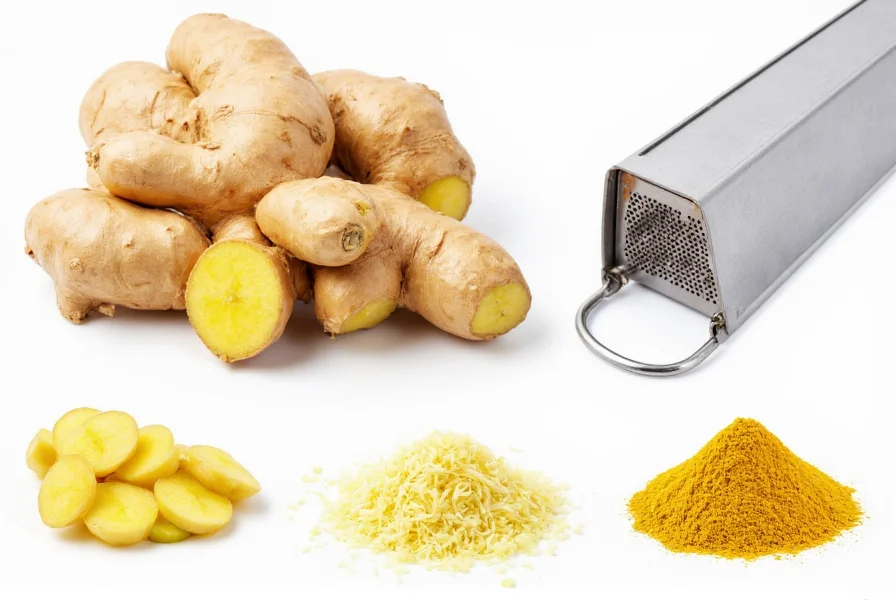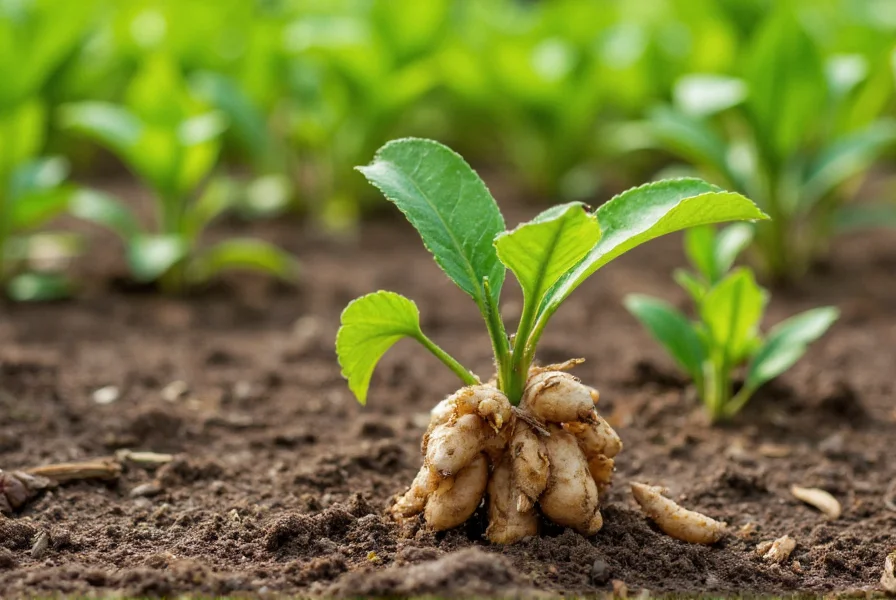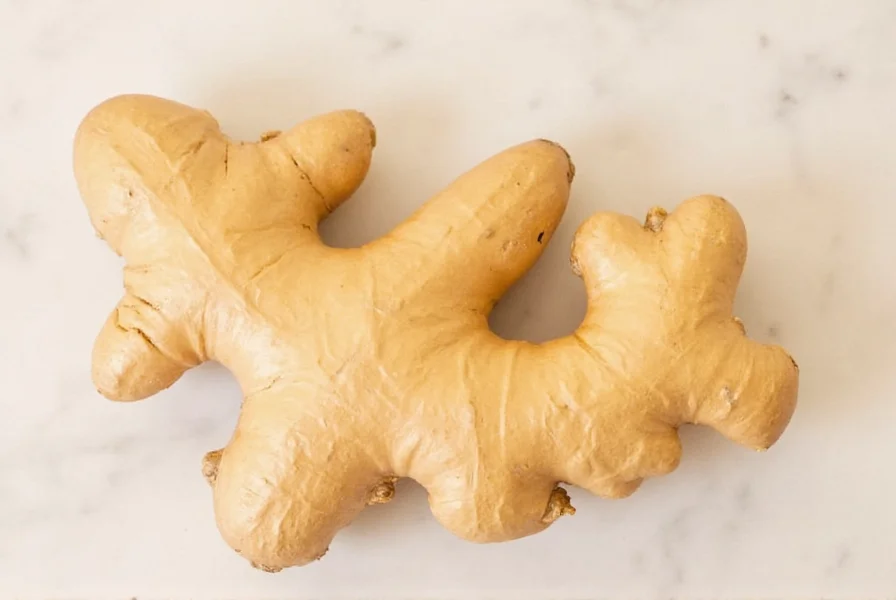When exploring ginger applications, it's essential to understand both traditional uses and evidence-based benefits. This versatile root has been used for over 5,000 years across Asian and Middle Eastern cultures for digestive support and flavor enhancement. Modern research confirms many traditional applications while revealing new potential uses in contemporary health and culinary practices.
Culinary Ginger Applications
Chefs and home cooks utilize ginger in diverse culinary applications that transform ordinary dishes into extraordinary creations. The rhizome's unique flavor profile—simultaneously spicy, sweet, and citrusy—makes it indispensable in multiple global cuisines.
For optimal flavor extraction in cooking applications, grate fresh ginger just before use to preserve volatile compounds. Asian cuisine frequently employs ginger in stir-fries, where thin slices or fine grating distributes flavor evenly without overwhelming other ingredients. In baking applications, crystallized ginger adds texture and warmth to cookies and cakes, while ground ginger provides consistent flavor in spice blends.

Medicinal Applications of Ginger
Scientific research supports several medicinal applications of ginger, particularly for digestive health and inflammation management. A comprehensive review published in Nutrients (2021) analyzed 109 studies confirming ginger's effectiveness for:
| Health Application | Recommended Dosage | Scientific Support Level |
|---|---|---|
| Morning sickness relief | 1-1.5g daily | Strong clinical evidence |
| Osteoarthritis pain | 500mg-1g daily | Moderate evidence |
| Post-exercise muscle pain | 2g daily for 11 days | Preliminary evidence |
| Chemotherapy-induced nausea | 0.5-1g with treatment | Strong clinical evidence |
For nausea relief applications, ginger works by accelerating gastric emptying and blocking serotonin receptors. Prepare ginger tea by steeping 1-2 teaspoons of freshly grated root in hot water for 10 minutes. This simple preparation remains one of the most effective ginger applications for digestive discomfort.
Gardening and Cultivation Applications
Ginger cultivation applications extend beyond consumption to sustainable gardening practices. The plant thrives in partial shade with well-draining, nutrient-rich soil. Start cultivation by selecting plump, firm rhizomes with multiple growth buds.
Plant ginger applications in gardening include using the plant as a natural pest deterrent. The strong aroma repels certain insects while attracting beneficial pollinators. When growing ginger for culinary applications, harvest rhizomes after 8-10 months when leaves begin yellowing. Carefully dig around plants to avoid damaging the delicate root structure.

Household and Non-Culinary Applications
Lesser-known ginger applications extend to household uses and personal care. The antimicrobial properties make ginger valuable for natural cleaning solutions. Create an all-purpose cleaner by combining ginger extract with vinegar and water for surfaces requiring gentle disinfection.
In hair care applications, ginger stimulates circulation to the scalp when applied as a diluted oil treatment. Mix 2 tablespoons of ginger juice with 1 tablespoon of carrier oil and massage into the scalp for 15 minutes before washing. This traditional application shows promise for promoting hair growth according to preliminary research in the Journal of Ethnopharmacology.
Safety Considerations for Ginger Applications
While generally safe, certain ginger applications require caution. Consult healthcare providers before using medicinal ginger applications if taking blood thinners, diabetes medications, or hypertension drugs. The recommended maximum daily intake for adults is 4 grams of fresh ginger or 1 gram of powdered ginger.
Pregnant women should limit ginger applications to 1 gram daily for nausea relief after first trimester. Children under 2 should avoid medicinal ginger applications entirely. Discontinue use if experiencing heartburn, mouth irritation, or allergic reactions.
Maximizing Ginger Benefits Through Proper Application
Understanding the optimal application method significantly impacts ginger's effectiveness. For anti-inflammatory applications, combine ginger with black pepper to increase bioavailability of active compounds. When using ginger for digestive applications, consume before meals for best results.
Storage techniques affect ginger applications—freeze whole rhizomes for extended shelf life while preserving potency. Dried ginger maintains approximately 70% of fresh ginger's active compounds, making it suitable for certain applications where fresh ginger isn't available.
Frequently Asked Questions
What are the most effective ginger applications for nausea relief?
The most effective ginger applications for nausea relief include freshly brewed ginger tea (1-2 teaspoons grated root steeped for 10 minutes), ginger chews containing 250-500mg of ginger extract, and crystallized ginger pieces. Research shows these applications provide relief within 30-60 minutes for motion sickness, morning sickness, and postoperative nausea when consumed before symptoms begin.
How do I prepare ginger for maximum medicinal benefit in anti-inflammatory applications?
For optimal anti-inflammatory applications, grate fresh ginger and let it sit for 5 minutes before use to activate enzymes that increase gingerol concentration. Combine with a small amount of black pepper (1/8 teaspoon per serving) to enhance absorption. Consume with healthy fats like coconut oil to improve bioavailability. Daily applications of 1-2 grams of fresh ginger in tea or smoothie form show measurable reduction in inflammatory markers after 4-6 weeks of consistent use.
Can I use ginger applications for skin care and what are the proper methods?
Yes, ginger applications can benefit skin health when properly prepared. Create a facial toner by steeping grated ginger in distilled water for 20 minutes, then cooling and straining. Apply with cotton pad after cleansing. For acne-prone skin, combine 1 teaspoon ginger juice with 1 tablespoon aloe vera gel. Always perform a patch test first, as ginger can cause irritation in sensitive skin types. Limit skin applications to 2-3 times weekly due to ginger's potent compounds.
What are the best ginger applications for cooking with different types of cuisine?
Asian cuisine applications typically use young ginger in stir-fries and marinades, while mature ginger works better in braises and stews. For Indian dishes, dry-fry ginger before adding to temper the sharpness. In baking applications, combine with complementary spices like cinnamon and cardamom. Western cuisine applications often feature candied ginger in desserts or infused in syrups for cocktails. Always add ginger early in cooking for milder flavor or later for more pronounced heat.
How long do ginger applications remain effective after preparation?
Freshly prepared ginger applications maintain maximum potency for 24 hours when refrigerated. Ginger tea loses approximately 20% of active compounds after 4 hours at room temperature. For medicinal applications, consume within 8 hours of preparation for optimal benefits. Frozen ginger applications retain about 85% effectiveness for up to 6 months. Dried ginger applications maintain stability for 2-3 years when stored in airtight containers away from light and moisture.











 浙公网安备
33010002000092号
浙公网安备
33010002000092号 浙B2-20120091-4
浙B2-20120091-4